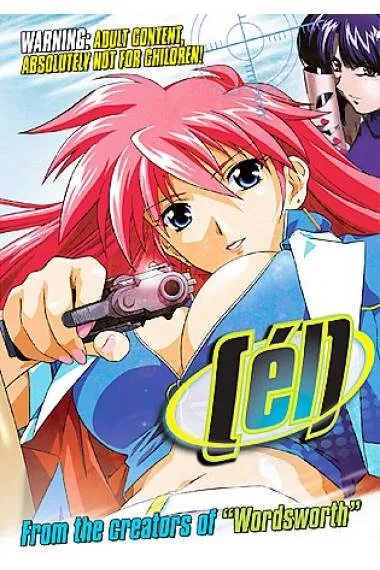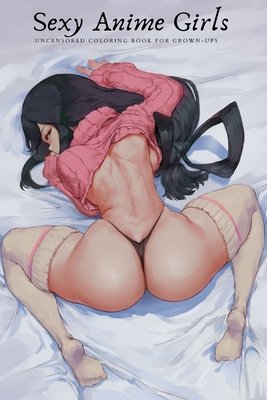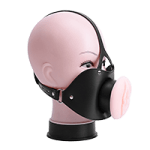Did You Know Hentai Imports Are Banned In Australia?

At the end of October, quietly and without most of Australia noticing, there was a change placed. Hentai imports and adult sensitive material from Japan are banned.
For those who are interested, Outside of Japan, Hentai refers to anime or manga that is of a pornographic nature. In Japan however “hentai” is not a genre of media but a word that when translated means any type of perverse or bizarre sexual desire or act. For example, outside of Japan a work of animation depicting lesbian sex might be described as “yuri hentai”, but in Japan it would just be described as “yuri”
Changes To Australian Law
J-List was the one who took to their blog to outline recent changes and alert their loyal customers and fan base of the changes Australia had made. Unfortunately, the importing of adult material that is animated and bears an 18+ mark will no longer be allowed into Australia and will be seized or returned.
DHL Japan called J-List- a prominent supplier of Hentai and Adult anime material to advise them of the changes made to the shipping of goods and services to Australia. This includes Manga, Hentai, doujinshi, figurines, onaholes (Hentai version of a Masturbator), posters, dvds, body pillows and waifus (fictional female hentai character).
The Australian Border Force Quotes:
“Publications, films, computer games and any other goods that describe, depict, express or otherwise deal with matters of sex, … in such a way that they offend against the standards of morality, decency and propriety generally accepted by reasonable adults are not allowed.”
The decision is said to come off the back of a court case in South Australia where a person was in possession of a few hundred hentai images of a child-like nature and further outcries from Stirling Griff; Politician, that Anime and Hentai sexually depict characters who look like children.
The decision has been met on social media with outrage and hostility, comparing popular tv shows streaming on Netflix such as Cuties and Australia’s own rating system as M15+ but not allowing material rated 18+ into the country and drawing similarities with the porn industry’s own model’s who look younger than 18 but are still legally allowed to make and distribute material.
Exploring Hentai: Understanding Its Origins
Hentai, a term derived from the Japanese word for “pervert” or “perversion,” refers to a genre of anime and manga characterized by explicit sexual content. While its roots are deeply embedded in Japanese culture, hentai has gained significant attention and controversy in Western societies. This article delves into what hentai is, the different categories it encompasses, where it is produced, the profile of its audience, and the ongoing debate about its place in Western culture.
What is Hentai?
Hentai is a genre within the broader realm of Japanese anime and manga that focuses on sexually explicit themes and content. Unlike mainstream pornography, hentai often features exaggerated art styles, fantastical elements, and narratives that can range from romantic to extreme. It can be presented in various formats, including comics (manga), animated videos (anime), games, and even novels.

Categories of Hentai
Hentai encompasses a wide array of sub-genres, catering to diverse tastes and fetishes. Some of the most common categories include:
- Yaoi (Boys’ Love): Focuses on romantic and sexual relationships between male characters.
- Yuri (Girls’ Love): Centers on romantic and sexual relationships between female characters.
- Futanari: Features characters with both male and female sexual organs.
- Tentacle Erotica: A unique sub-genre involving characters with tentacles, often seen in fantastical or alien settings.
- Shota: Involves young-looking male characters, often controversial due to its depiction of underage boys.
- Loli: Similar to Shota but features young-looking female characters, also controversial for depicting underage girls.
- Incest: Portrays sexual relationships between family members, which is another highly controversial category.
- BDSM: Focuses on bondage, dominance, submission, and sadomasochism.
Production of Hentai
Hentai is predominantly produced in Japan, where it is a significant part of the adult entertainment industry. Major hentai publishers and studios include names like Soft on Demand, Tora no Ana, and Pink Pineapple. The production process for hentai anime and manga follows similar steps to those of mainstream anime and manga but with a focus on adult content.
Profile of Hentai Viewers
The audience for hentai is diverse, spanning different age groups and demographics. According to some studies and surveys, the majority of hentai consumers are male, but there is a notable and growing female audience as well. Viewers are typically adults, with interests ranging from casual curiosity to avid fandom. Online communities and forums dedicated to hentai allow fans to discuss and share their interests, contributing to a sense of community among enthusiasts.

The Debate: Does Hentai Have a Place in Western Society?
The presence of hentai in Western society is a topic of considerable debate. Supporters argue that hentai, like any other form of adult entertainment, should be accessible to those who enjoy it, emphasizing freedom of expression and the right to explore diverse sexual fantasies. Critics, however, raise concerns about the ethical implications, particularly regarding the depiction of underage characters and extreme fetishes.
Supporters’ Perspective:
- Freedom of Expression: Advocates highlight the importance of artistic freedom and the right to create and consume diverse forms of media.
- Sexual Exploration: Hentai allows individuals to explore their sexual fantasies in a safe, fictional environment.
- Cultural Exchange: Hentai is part of Japanese culture, and its acceptance can be seen as a broader acceptance of cultural diversity.
Critics’ Perspective:
- Moral and Ethical Concerns: The depiction of underage characters and incest in some hentai genres raises serious ethical issues.
- Potential Harmful Effects: There is ongoing debate about whether consuming hentai can influence real-world behavior, particularly concerning the normalization of taboo subjects.
- Cultural Differences: Some argue that hentai’s explicit content may clash with Western societal norms and values.
Authoritative References
For further reading and authoritative references on hentai, consider the following sources:
- Academic Research: Studies on the cultural and psychological impact of hentai and its role in Japanese society can be found in journals like the “Journal of Japanese Studies” and “Sexuality & Culture.”
- Online Communities: Websites like MyAnimeList and Reddit host discussions and reviews from fans and critics alike.
- Books: “The Anime Encyclopedia: A Century of Japanese Animation” by Jonathan Clements and Helen McCarthy provides in-depth insights into various anime genres, including hentai.
- News Articles: Publications like The New York Times and BBC have covered the topic, providing a broader societal context.
Hentai is a complex and multifaceted genre that reflects both the creativity and the controversies of adult entertainment. While its place in Western society remains contentious, understanding its origins, categories, and audience can foster a more informed discussion about its role in the global cultural landscape. Whether viewed as an art form, a means of sexual exploration, or a source of ethical debate, hentai continues to be a significant topic worthy of exploration and discussion.
Informaton in the world of hentai, you can explore these resources:
At your Service
Tiffany
Caringbah Oh Zone Consultant, Educator and former Otaku


 Anal Beads
Anal Beads Anal Vibrators
Anal Vibrators Butt Plugs
Butt Plugs Prostate Massagers
Prostate Massagers
 Alien Dildos
Alien Dildos Realistic Dildos
Realistic Dildos
 Kegel Exercisers & Balls
Kegel Exercisers & Balls Classic Vibrating Eggs
Classic Vibrating Eggs Remote Vibrating Eggs
Remote Vibrating Eggs Vibrating Bullets
Vibrating Bullets
 Bullet Vibrators
Bullet Vibrators Classic Vibrators
Classic Vibrators Clitoral Vibrators
Clitoral Vibrators G-Spot Vibrators
G-Spot Vibrators Massage Wand Vibrators
Massage Wand Vibrators Rabbit Vibrators
Rabbit Vibrators Remote Vibrators
Remote Vibrators
 Pocket Stroker & Pussy Masturbators
Pocket Stroker & Pussy Masturbators Vibrating Masturbators
Vibrating Masturbators
 Cock Rings
Cock Rings Penis Pumps
Penis Pumps
 Wearable Vibrators
Wearable Vibrators Blindfolds, Masks & Gags
Blindfolds, Masks & Gags Bondage Kits
Bondage Kits Bondage Wear & Fetish Clothing
Bondage Wear & Fetish Clothing Restraints & Handcuffs
Restraints & Handcuffs Sex Swings
Sex Swings Ticklers, Paddles & Whips
Ticklers, Paddles & Whips


















